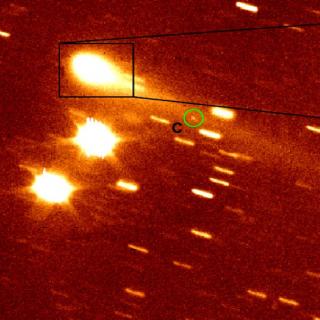Fingerhut, Robin L.; McCall, Marshall L.; Argote, Mauricio; Cluver, Michelle E.; Nishiyama, Shogo; Rekola, Rami T. F.; Richer, Michael G.; Vaduvescu, Ovidiu; Woudt, Patrick A.
Referencia bibliográfica
The Astrophysical Journal, Volume 716, Issue 1, pp. 792-809 (2010).
Fecha de publicación:
6
2010
Revista
Número de citas
20
Número de citas referidas
18
Descripción
We present deep near-infrared (Ks ) images and surface
photometry for 80 dwarf irregular galaxies (dIs) within ~5 Mpc of the
Milky Way. The galaxy images were obtained at five different facilities
between 2004 and 2006. The image reductions and surface photometry have
been performed using methods specifically designed for isolating faint
galaxies from the high and varying near-infrared sky level. Fifty-four
of the 80 dIs have surface brightness profiles which could be fit to a
hyperbolic-secant (sech) function, while the remaining profiles could be
fit to the sum of a sech and a Gaussian function. From these fits, we
have measured central surface brightnesses, scale lengths, and
integrated magnitudes. This survey is part of a larger study of the
connection between large-scale structure and the global properties of
dIs, the hypothesized building-blocks of more massive galaxies.
Proyectos relacionados

Pequeños Cuerpos del Sistema Solar
Este Proyecto estudia las propiedades físicas y composicionales de los llamados pequeños cuerpos del Sistema Solar, que incluyen asteroides, objetos helados y cometas. Entre los grupos de mayor interés destacan los objetos trans-neptunianos (TNOs), incluyendo los objetos más lejanos detectados hasta la fecha (Extreme-TNOs o ETNOs); los cometas, y
Julia de
León Cruz